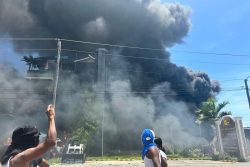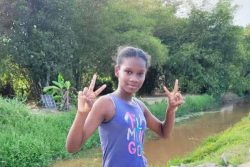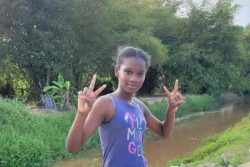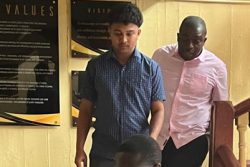Guyana, a country rich in natural resources and cultural diversity, is home to a significant Amerindian population, whose communities have experienced centuries of marginalization and exploitation. In this context, the concept of “silent sufferings” becomes particularly poignant.
It is now the case that millions of dollars are being poured into these communities under the government’s Low Carbon Development Stra-tegy and the carbon credits deal with US oil company Hess. These indigenous communities have been given the opportunity to craft their own development plans and the outturn will have to be carefully examined. Even so, the question of the authority of the assigning of lands for the credit carbon transaction remains unanswered as village councils were not directly canvassed.
There have also clearly been increased visits to indigenous communities by government ministers and President Ali himself has made routine trips and spent time in the hinterland. Whether these excursions are really empowering these communities or they remain subject to paternalistic attitudes still has to be determined
The history of the Amerindians in Guyana is marked by colonization, land dispossession and systemic neglect. Despite these struggles, many of these communities remain largely unheard in the national discourse, leading to the dangerous assumption that “if they aren’t complaining, why should anyone speak on their behalf?” This perspective dismisses the deep-rooted issues faced by Amerindian peoples and perpetuates their silent suffering, ultimately reinforcing historical inequalities and rendering their struggles invisible.
After independence in 1966, the situation for Guyana’s Indigenous communities did not dramatically improve. While the country as a whole experienced political and economic growth, Amerindian communities remained on the periphery of the national consciousness, often ignored by policymakers and sidelined in economic development. The post-colonial state continued to exploit the natural resources of Indigenous lands, with mining and logging interests frequently intruding on their territories without consultation or consent.
The systemic nature of this exclusion and exploitation has resulted in many Amerindian communities suffering from poverty, inadequate healthcare, and limited educational opportunities. Tele-medicine has however been an innovation for the hinterland and more health centres have been constructed. A number of secondary and primary schools have also been bult since 2020 and others are under construction.
It’s essential to recognize that the lack of overt public protest in Amerindian communities should not be mistaken for contentment. In many cases, these communities lack the resources and platforms to voice their concerns to the broader public. Many Amerindian villages are located in remote areas with limited access to communication channels, and their residents may not have the means to organize protests or mobilize in the way that more urbanized groups can. Not forgetting, their own who benefit from the oppression and intentionally squash attempts to protest.
Additionally, years of historical trauma have made many Amerindians cautious and distrustful of outsiders, including those who may want to help. There is often a belief that outside intervention is either motivated by self-interest or will only bring further harm. This skepticism is compounded by a historical pattern of governments and corporations dismissing Indigenous concerns in favour of resource extraction or other commercial interests.
The silence, therefore, is not a reflection of satisfaction with their circumstances but rather a complex survival mechanism. It is also a result of the power dynamics in place, where the voices of marginalized people are systematically silenced or ignored.
Amerindian communities in Guyana continue to face significant struggles, despite some legal protections and efforts by advocacy groups. One of the most pressing issues remains land rights. Guyana’s Amerindian Act of 2006, which was designed to secure Indigenous land titles, has had limited impact in practice. While some communities have successfully gained formal recognition of their territories, many others still struggle to assert their land claims and await demarcation and titles. The expansion of the mining and logging industries, particularly in the hinterland regions, threatens these lands, with little regard for the rights of the Indigenous peoples who have lived there for generations.
The extraction of resources from Amerindian lands often happens without proper consultation or compensation, leading to environmental degradation and the destruction of traditional livelihoods. Many Amerindian communities rely on the land for subsistence farming, hunting, and fishing, and the encroachment of industrial activities threatens their way of life.
Moreover, the Amerindian population in Guyana continues to face significant challenges in terms of healthcare and education. Many remote villages have limited access to basic services. Diseases such as malaria, tuberculosis, malnutrition and untreated mental health challenges are more prevalent in these communities.
In education, while there has been some improvement in recent years, many Amerindian children still attend schools that are underfunded and ill-equipped. The curriculum is often not reflective of their cultural heritage, and there are few opportunities for Indigenous youth to learn in their native languages.
The dangerous assumption that “if they aren’t complaining, why should anyone help?” has had real-world consequences for the Amerindian peoples of Guyana. It is crucial, then, that allies—both within and outside the country—take up the mantle of advocacy and amplify the voices of those who have been silenced for far too long. However, this advocacy must be done with respect, sensitivity, and a genuine commitment to supporting Indigenous self-determination, rather than imposing external solutions.
There have been efforts by local and international organizations to support Amerindian rights in Guyana, including campaigns for land rights, better healthcare, and education. Groups like the Amerindian Peoples Association (APA) and other non-governmental organizations (NGOs) have worked to raise awareness about the issues affecting these communities. However, these efforts often face resistance from both state and private actors who are more invested in exploiting Indigenous lands for economic gain.
One of the most significant roles of an ally is to help amplify the voices of Indigenous peoples rather than speaking for them. Allies must create spaces where Amerindian communities can express their concerns, share their experiences, and organize in ways that are culturally appropriate and respectful of their traditions. The goal is to empower these communities to advocate for their own rights, rather than assuming that their silence means they do not need or want help.
Amerindian communities may not always voice their suffering in the ways that others expect, but that does not mean they are not enduring hardship. It is our responsibility—especially as allies and advocates—to break the silence and ensure that their voices are heard, respected, and acted upon.








